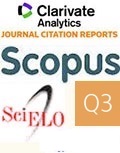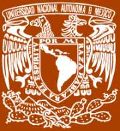|
Boletín de la Sociedad Geológica Mexicana Volumen 76, núm. 2, A250224, 2024 http://dx.doi.org/10.18268/BSGM2024v76n2a250224
|
 |
Burning effects on the soils of the Mexican Maya Lowlands: Current evidence for understanding past events
Efectos de quemas en los suelos de las Tierras Bajas Mayas en México: Evidencias actuales para entender eventos del pasado
Sol Moreno-Roso1,2,*, Elizabeth Solleiro-Rebolledo2, Sergey Sedov2, Bruno Chávez-Vergara2,3,
Agustín Merino4
1 Posgrado en Ciencias de la Tierra, Universidad Nacional Autónoma de México, Ciudad Universitaria, Coyoacán 04510, CDMX, México.
2 Instituto de Geología, Departamento de Ciencias Ambientales y del Suelo, Universidad Nacional Autónoma de México, Ciudad Universitaria, Coyoacán 04510, CDMX, México.
3 Laboratorio Nacional de Geoquímica y Mineralogía, Ciudad Universitaria, Coyoacán 04510, CDMX, México.
4 Departamento de Edafología y Química Agrícola, Escuela Politécnica Superior de Ingeniería, Universidad de Santiago de Compostela, 27002, Lugo, Spain.
* Corresponding author: (S. Moreno-Roso) This email address is being protected from spambots. You need JavaScript enabled to view it.
How to cite this article:
Moreno-Roso, S., Solleiro-Rebolledo, E, Sedov, S. Chávez-Vergara, B., Merino, A., 2024, Burning effects on the soils of the Mexican Maya Lowlands: Current evidence for understanding past events: Boletín de la Sociedad Geológica Mexicana, 76 (2), A250224. http://dx.doi.org/10.18268/BSGM2024v76n2a250224
Manuscript received: November 8, 2023; corrected manuscript received: February 12, 2024; manuscript accepted: February 26, 2024.
ABSTRACT
The slash-and-burn cultivation system is a millenarian practice still used in many countries today, with significant environmental impacts. However, identifying evidence of this agricultural method in soil records is challenging due to natural and human factors that can obscure or alter fire signals. This challenge is particularly evident in the Yucatán Peninsula, where the ancient Maya practiced slash-and-burn agriculture in a dynamic tropical karst environment, making it difficult to pinpoint the origins and consequences of this practice. In this study, we use a recent agricultural burning in a karstic landscape in Chiapas as a model to understand alterations in soil properties. We then apply these insights to identify similar features at a Maya site on the Yucatán Peninsula, specifically at Coyote Quarry. For both cases, we conducted micromorphological analysis, soil physical-chemical characterization, thermogravimetry and differential scanning calorimetry analysis, and radiocarbon dating of mollusk shells, soil organic carbon, and charcoal fragments (the latter exclusively at Coyote Quarry). Our findings reveal significant effects on the soils from the Chiapas site post-burning, including changes in grain size distribution, pH, and total organic and inorganic carbon. These results were compared to those obtained from the Coyote Quarry soils and pedosediments. Key findings include micromorphological features, the presence of charcoal and other burned materials, and pyrogenic carbon identified through thermal analyses. The preservation of these burned features was facilitated by the typical karstic vertical soil erosion and redeposition as pedosediments in karstic depressions. The intrinsic association of the fire signals found in these karstic sinkholes and their radiocarbon dates enables us to link this evidence to the initiation of slash-and-burn agriculture by the Maya in the Yucatán Peninsula during the transition between the Archaic and Early Pre-Classic periods.
Keywords: Maya, slash-and-burn agriculture, pyrogenic carbon, soil erosion, pedosediments, karstic pockets.

